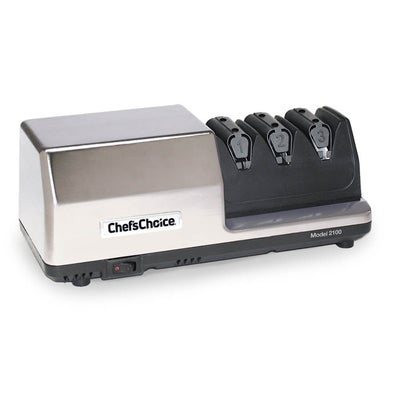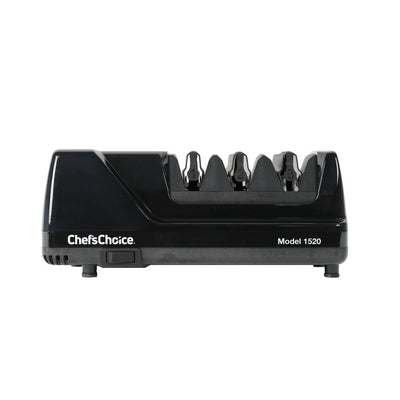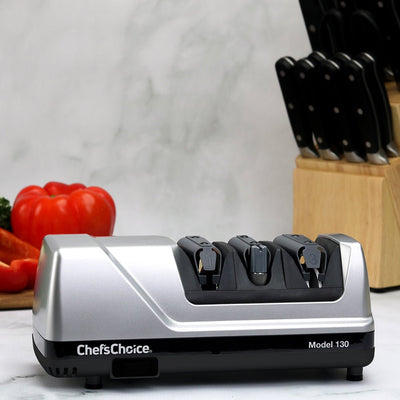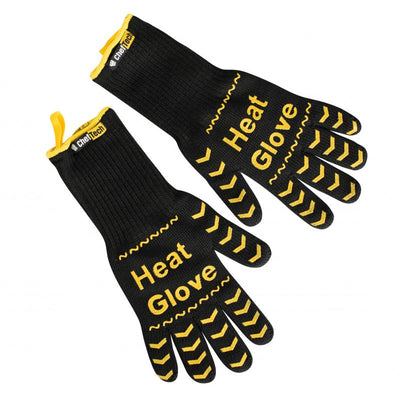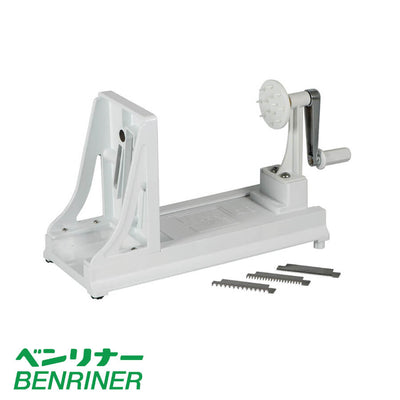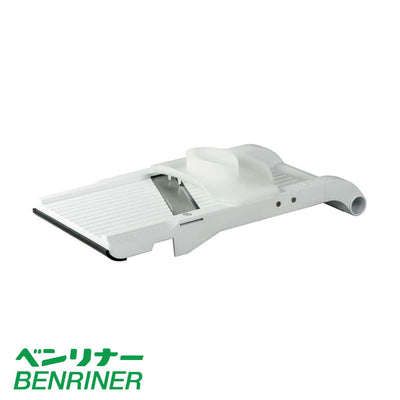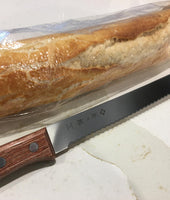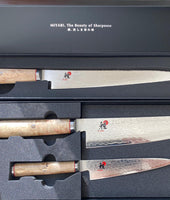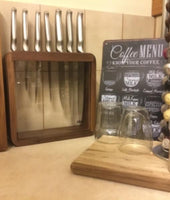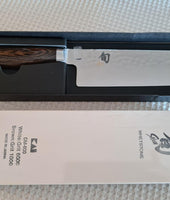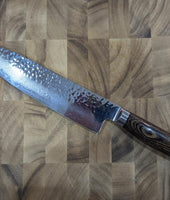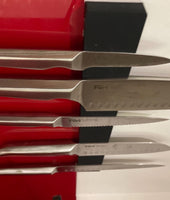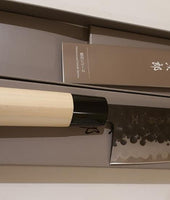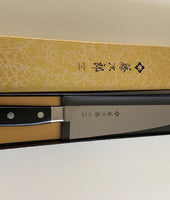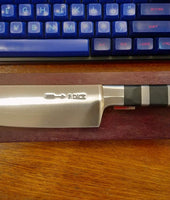Kitchen Safety Rules 101 – Ways to Avoid Kitchen Hazards
A significant percentage of emergency room visits come from the kitchen.
Here are the key ways to prevent kitchen accidents. Remember to be attentive at all times in the kitchen, use the right kitchen tools, and continually adhere to best practices to create a safe cooking environment.
General Safety Guidelines
Keep your mind focused on what you are doing. Do not let hair, jewelry, sleeves get tangled up - they can catch fire or interfere with electrical equipment.
Store heavy or bulky items on the lower shelves. Close drawers and doors and use the appropriate kitchen tools to expand storage space. Avoid clutter.
Food Safety Guidelines
Food safety is just as important as personal safety in the kitchen. Proper food storage and handling can save you from the costs and agony of food poisoning.
Use suitable containers to store items such as aluminum foil, tin, plastic, and wraps and keep the storage area clean and dry.
Transfer nuts and sugar to airtight containers to protect them from pests. Raw foods should be kept away from ready-to-eat or unclean food. Choose the right containers that enable food to retain its nutritious quality. Label all containers for easy handling.
Prevent Slip and Fall Accidents
Slips and falls can lead to fractures and concussions, and even death.
Mop up all spills and leaks as soon as they occur. Keep floors clean and tidy and eliminate other hazards, including the damaged or worn floor.

As you work in the kitchen, tie the shoes, and avoid wearing long dresses or floppy slippers. When reaching for items in the upper shelves, use a ladder or a solid ladder instead of a chair.
First aid for slip and fall accidents
-
Do not move a person with fractured bones unless necessary
-
Call for medical help if you have dizziness, headache or, vomiting after a head injury
-
Minor scratches/congestion require a bag of ice or cold water/cloths and height
Knife Safety Guidelines
Sharp knives are essential for efficiency in the kitchen, but improper handling can lead to injuries. Always work with properly designed that guarantee a non-slip grip. Choose an ergonomic handle that doesn't feel slippery.
Keep knives sharp and use them properly. Blunt knives require extra force during cutting tasks-you might accidentally slice your finger as a result.
Use a drawer divider or knife maker with sharp cutting tools for safe knife storage. Keep knives away from the counter edge to reduce the chance of being hit.
Do not put knives in a sink or bucket of water; you may forget and put your hand in it in rapid motions. Do not handle food by hand while cutting.
Always cut on a cutting board.
Wash the knives immediately after use and keep the sharp edge of the knife away from you when you wash

First-aid tips for cuts
-
Stop excessive bleeding with the pressure of thick cloth; get medical help
-
Small cuts - wash with soap and water, wipe dry with a bandage
-
Cover the wound with a Band-Aid
-
Apply honey or aloe gel
Electrical Safety Guidelines
Electrical appliances in the kitchen save time and effort. However, improper use can lead to shock, burns, and other serious injuries.
Connect high-resistance equipment to GFCI secure outlets to minimize the chances of an electric shock or fire.
Get all the electrical equipment away from the sink, so water doesn't cause a hazard. Unplug the toaster and other counterfeit equipment when not in use.

Make sure there is space behind the refrigerator for air circulation.
When using an electric knife sharpener, or blender, or any other powered kitchen appliance, follow all manufacturer instructions:
-
Avoid damaging the electrical cords - don't pull the cable, attach it, or burn it
-
Do not use electrical appliances when wet
-
Water can damage motors in electrical appliances such as refrigerators and freezers
Note that even a minor shock from a large object can indicate a hazardous wiring situation. Ensure not to touch the equipment until a licensed, qualified electrician has inspected it. Get regular professional maintenance for the electrical kitchen tools.
Electric shock first aid tips
- Do not come into contact with a person connected to the power outlet
- Turn off the electricity, pull the plug, or pull the person with a cloth
- Perform CPR if you qualify or call for emergency medical help
Chemical Safety Guidelines
Chemicals in the kitchen, such as bleach and oven cleaners, can cause burns, difficulty of breathing, and poisoning.
Read labels and follow usage directions. Never mix different chemical products, Never transfer hazardous products to another container, follow antitoxin instructions in a well-ventilated area in the event of chemical poisoning.

Never mix things like bleach and ammonia; you may end up with a Hiroshima in your home. Use charcoal/stoves outside to avoid carbon monoxide poisoning.
Chemical first aid tips for chemical hazards
-
Take the person to a well-ventilated area
-
Call medical help again and if possible, use an antidote
-
Clean eyes with water if they feel irritated
Fire Safety Guidelines
A large percentage of home fires start in the kitchen. They lead to loss of lives, injuries, or property damage.
Don't leave the kitchen while cooking or frying food; fires could accidentally start when you are not monitoring the stove. If you leave the kitchen for just a short time, turn off the stove.
Your kitchen should have a fire extinguisher; never use water to quench a fire - grease will spread and burn. Instead, turn off the heat, or pour salt or baking soda on the flames.

Keep anything that could catch fire, including oven covers, wooden utensils, plastic bags, food packaging, or paper towels away from your stove.
If you are cooking, baking, roasting, or boiling food, check it regularly, stay home while the food is cooking, and use a timer to remind you when to turn off the stove.
Wear short sleeves when cooking. Loose clothing can cling to fires and catch fire when exposed to gas flames or electric fires.
Fire safety best practices
-
Use baking soda instead of water to put out fires
-
Use a fire extinguisher; best recommended
-
If the clothes catch fire, get down and rollover to put out the fire on your person
-
Crawl on the floor to get out of the smoke-filled room.
First-aid tips
- Cool with cold water / long ice will dry the tissues.
- Don't apply oil and grease (it slows the healing process).
Hot Items Safety Guidelines
Some of the worst kitchen burns come from hot foods, so avoid overheating by following these rules:
-
Use a potholder when removing tops from food cooking to prevent horrible steam burns. Keep the liquid away from hot oils; it will cause the oil to be sprayed.
-
Use rear heaters where possible, or open pots and pans in the corner while on the floor. Don't put hot foods in the blender; things could blow up in your face.
First-aid tips for burns
-
Clean the wound with soap and water
-
Apply honey or aloe gel
-
Cover with a nonstick bandage
Most kitchen accidents are preventable. Follow these guidelines for a safe and incident-free kitchen experience.
Also Read: Zwilling J.A. Henckel Knives - J.A. Henckels knife set
Explore More Products: Tojiro Zen Black Slicing Knife Knife 21cm | Victorinox All-Purpose Scissors | Victorinox Fibrox American Type Skinning Knife 15cm | Victorinox Butcher Starter Knife 4 Pc Set

















